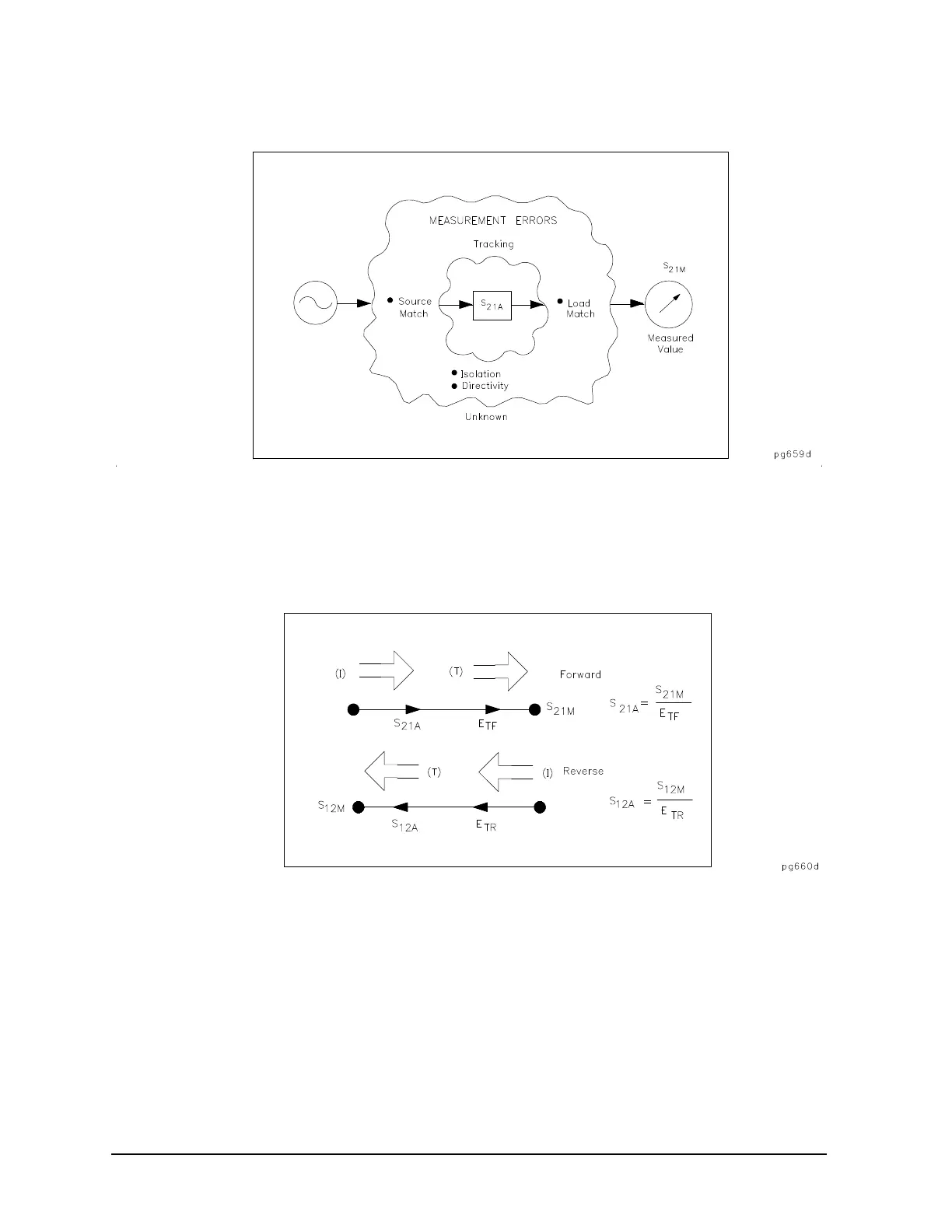7- 48
Operating Concepts
Measurement Calibration
Figure 7-34 Major Sources of Error
The transmission coefficient is measured by taking the ratio of the incident signal (I) and the transmitted
signal (T). Refer to
Figure 7-35. Ideally, (I) consists only of power delivered by the source, and (T) consists
only of power emerging at the test device output.
Figure 7-35 Transmission Coefficient
As in the reflection model, source match can cause the incident signal to vary as a function of test device
S
11A
. Also, since the test setup transmission return port is never exactly the characteristic impedance, some
of the transmitted signal is reflected from the test set port
2, and from other mismatches between the test
device output and the receiver input, to return to the test device. A portion of this signal may be re-reflected
at port 2, thus affecting S
21M
, or part may be transmitted through the device in the reverse direction to
appear at port 1, thus affecting S
11M
. This error term, which causes the magnitude and phase of the
transmitted signal to vary as a function of S
22A
, is called load match, E
LF
. See Figure 7-36.

